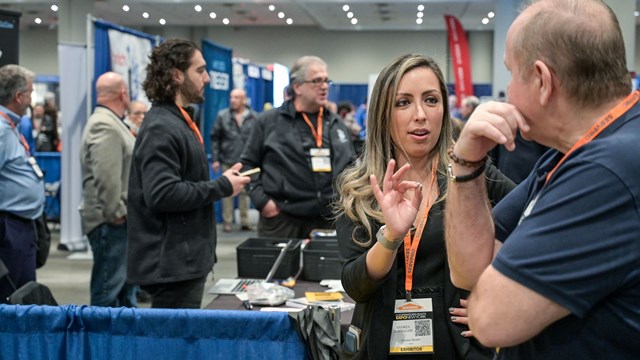
Media room, game room, common room, party room—regardless of what you call them, the purpose of these shared spaces in co-ops and condos is to give residents a place to gather; to hold an in-house meeting, throw a graduation party or screen a movie, just to name a few possibilities.
Charging a modest fee to rent the room—either to residents or outsiders—can even be a welcome revenue stream for a community as well. However, if nobody is using a common room and it's just sitting there, lonely and neglected, the space can fall into disrepair. An underused, uncared-for common room becomes even less appealing to residents, and can ultimately create a vicious cycle and turn it from an amenity to a liability.
In tough economic times, when a community association may be struggling to fund pressing repairs and residents may be in arrears, how do you breathe life into a languishing common area? If the roof is leaking, the media room's new flat screen will just have to wait—and getting new pool cues or steam-cleaning the sofas suddenly doesn't seem quite so important. But it doesn't have to be such an either-or choice. Some keys to making your community space desirable and successful (and keeping it that way) are in design, functionality, relevance and durability of the area—and they don't have to cost an arm and a leg.
A Good Hard Look
Accessing the condition and atmosphere in your common room is pretty straightforward; First and foremost, how do you feel about the space when you walk in? Is it dated and dark? Is it dusty and unappealing? Or...is it just “not right?” Which parts of the room can you change, but not move (without incurring great expense, that is) i.e. the walls and floor? Most everything else is negotiable on every level, from the cost of an upgrade to arranging the furniture and so forth within the space. Lighting can also play an important role in making your room versatile and appealing.
Once these areas are identified discussions regarding what to be done with them can get under way. According to Dawn Causa of Causa Design Group in Fort Lauderdale, the easiest ways to open a dialogue and elicit feedback from residents on how they envision the room include meeting with the design committee and spending time with the residents.
“You can’t just pick up and move on a design quickly. If you want it to be a successful project you have to spend time with the community,” says Causa. “It might take a couple of hours or it might take a couple of days, but you have to understand how the community lives. You have individuals, and you have to understand how they live as individuals. Then there’s a community, and you have to understand how they live as a community.”
Opening the floor for resident feedback doesn't mean launching a free-form brainstorming session, however. Some concrete ideas or options should be nailed down prior to the feedback stage, and those choices presented to residents via surveys, emails and so forth.
“How much money they want to spend is the most important thing—once that’s figured out, you go from there,” says Pepe Calderin of Pepe Calderin Design Inc. in Miami. “Here in Florida there are a lot of people who are from out of town, and this is their second home. They come here once or twice a year so they don't really care if the lobby is spectacular because they are hardly here. Then there’s the other group who are here year round, and they tend to be very vocal about what they want.”
Causa says she approaches a design challenge by first studying the 'bones' and basic structure of the space, and then helping the design committee to formulate some specific, feasible options to present to the building community at large. “I’m going to look at the condition of what’s existing. How old the space is?” she says. “If I see any issues like water damage or severe wear and tear, that has to be addressed. We take lots and lots of pictures, and sometimes clippings of things we need to assess the type of material that was there before. Then I’ll come up with some ideas and give a presentation.”
“The first challenge of designing a space is understanding your client,” adds Calderin. “You do that by meeting with them. No one tells you everything up front. You have to get to know them. It might take a few meetings—or it might take a lot of meetings, but it’s very important. I’ll photograph the whole job, and then I come home and I breathe patiently and meditate over it.”
What Makes a Room Work
From a design standpoint, the pros say that the most successful common rooms tend to be consistent with the overall design aesthetic of the buildings. Variance on the theme of the aesthetic can assist in setting the backdrop for many different occasions, but residents shouldn't necessarily feel like they are walking into an entirely different structure. “I believe that strong architecture is important,” says Calderin, “And working with that architecture will make a common room successful.”
Appropriate flooring is also high on the list of ingredients in a successful design recipe. Upgrading scuffed, dingy laminate or snagged, grungy carpet can gain you a lot of mileage in the overall look and feel of a common room. And high-traffic floor treatments have come a long way since the days of checkerboard institutional linoleum tiles.
“The footprint and the layout are very important,” says Causa. “You might have a beautiful room but it might not have a good traffic pattern. You have to be able to maneuver around the space. That’s very important in a common room.”
Once basics like paint and flooring are decided on and dealt with, the possibilities for what goes in the room and where are endless. Community rooms have several different roles to play to meet everyone's needs, so versatility and mobility in furnishings is of the utmost importance. In addition to these two elements, lighting also has the ability to transform the room again and again. Most buildings—particularly older ones—are not equipped with recessed lights on dimmers, so more versatile 'work' and accent lighting is a great way to give the room some options.
“Lighting is extremely important. It sets the mood. You have to have proper task lighting,” says Causa. “There’s nothing worse than walking into a space and there’s not enough light or too much light.”
Grace Jones, a senior designer with The Design Firm in Key Largo agrees. “Lighting is always important in a common room,” says Jones. “Common rooms are going to be used for different purposes, everything from a baby shower to a business meeting—so the lighting has to suit multiple purposes.”
A Place to Gather
While adaptability is the name of the game when revamping a common room, it doesn't hurt to promote the space for specific purposes. A surefire way to get residents excited about using the space is to make it a designated media area. Flat-screen TVs are no longer the prohibitively expensive pieces of luxury equipment they once were, and even mid-priced models offer a myriad of functionality, from screening films to showing slide shows or PowerPoint presentations. Also, simply having WiFi access and an area for a laptop computer turns the space into a work station or study area.
“I find that a lot of the new buildings in South Florida have multimedia tech rooms,” says Causa. “So the residents can have business meetings or students can study. It’s put together technologically well. You’ll have flat screen TVs, computers, wireless access—your computer can link right to the television screen. Another trend I’m seeing in South Florida is that in exercise rooms they will take a portion of that room and convert it into a meditation space. Just a few years ago you wouldn’t see them at all.”
Not every building is lucky enough to have one of these rooms—and those that do may not be getting maximum use from what they do have. Revitalizing your own common room may not be as daunting as you think. If your co-op or condo community falls into the latter category, it might be well worth it to bring up the idea of an upgrade or re-imagining of your common room or rooms at the next meeting's agenda.
David Garry is a freelance writer and a frequent contributor to The South Florida Cooperator. Staff Writer Christy Smith-Sloman contributed to this article.





Leave a Comment